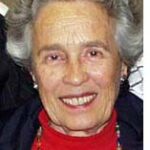By Eileen Wingard

LA JOLLA, California –The enthusiastic audience, which filled the JCC’s Dorothea and David Garfield Theatre recently, was thrilled by the artistry of three young Israelis, violinist Asi Matathias, a Pinchas Zukerman disciple, pianist Victor Stanislavsky, competitor in the recent Van Cliburn Competition, and mandolinist Avi Avital, a grammy-award nominee.
Matathias and Stanislawsky opened the May 24 program with the Vitali Chaconne. In the second half of the program, Avital also performed a Chaconne, Bach’s monumental opus, originally written for the violin. The Chaconne, a form patterned after a Spanish Dance in 3/4 meter, consists of a primary theme over a ground bass, followed by variations. Matathias and Stanislawsky performed the variations with creative imagination, each one taking on an individual character. The gifted violinist has a fluid, flexible bow arm which serves him well. Stanislawsky is every string player’s dream, attentively accompanying each nuance of the soloist, lending musical support, never overshadowing the string sound, and coming forth with elegant prominence during the piano’s solo passages.
The Strauss Violin Sonata, a challenging virtuoso work, was programmed next. This was a favorite of the great Jascha Heifetz who, in 1953, chose to perform it during his recital tour of Israel, even though he was advised against it. Following his performance in Jerusalem, Heifetz’s right wrist was struck by an iron pipe. The blow was delivered by a zealous young man as the world renowned artist was entering the King David Hotel. The injury created a big scandal and Heifetz did not return to Israel for many years afterwards.
Strauss, along with Wagner, was a composer Israelis did not wish to hear because of his connections to the Nazis. In 1933, it was Richard Strauss who stepped up to conduct when the acclaimed conductor, Bruno Walter, was banned from the podium because he was a Jew. However, Strauss’ support of the Hitler regime was more opportunistic than ideological, and later historians found that he actually helped some Jewish musicians. In recent years, the Israel Philharmonic has programmed his works. During one of the orchestra’s US tours, Strauss’ jocular ‘Til Eulenspiegel highlighted one of the Philharmonic’s concerts.
Matathias and Stanislavsky met the challenges of the Strauss Sonata head on. The first movement displayed the duo’s energetic vitality. The lyrical second movement had lovely filigree runs by the violin which were delicately echoed by the piano. The final movement, with its light-hearted humor, was a virtuosic tour de force. Matathias concluded his half of the program with Sarasate’s showy Caprice basque. The youthful virtuoso executed the difficult harmonics, left hand pizzicatos and double stops with ease, as if it were child’s play, and reveled in the seductive Spanish melodies.
David Homan, executive director of the America-Israel Cultural Foundation, which presented the program, in cooperation with the San Diego Center for Jewish Culture, spoke, citing the devotion of Israeli musicians to their countrymen and how, during hostilities, they rush to danger zones. They perform for the troops and for citizens confined to bomb shelters to help lift their spirits. Homan also introduced Avital, who has the unique distinction of being a classical mandolin soloist.
Although the mandolin’s voice is soft, Stanislawsky scaled down his dynamics to render beautiful piano accompaniment to Avital’s Nigun by Bloch. Avital was remarkable in managing to convey the poignant emotion of Bloch’s work on this plucked instrument. After all, it is the sustained melodic tone of the violin’s bow that conveys the essence of this work in its original form.
Avital’s Bach Chaconne was another amazing fete. Here, the mandolin had the advantage over the violin in its ability to play the chords by striking all the notes at once. However, the melodic passages needed to be sustained through tremoloed plucking rather than the long bow strokes of the violin. The audience was so enraptured by the soloist’s expressive playing that one could hear a pin drop.
Six De Falla Spanish Dances followed, accompanied by Stansilavsky, and Avital concluded with a contemporary witty composition for mandolin and piano by A. Kaufmann, Burletta and Miloka Dragomema.
As an encore, the three Israeli artists collaborated in the first movement of Bach’s Concerto for two violins. Matithias, by using less bow, carefully softened his sound to match that of the mandolin. The performance served as a lovely conclusion to an evening of great music making.
July Galper, who has facilitated San Diego performances of these artists in the past, was once again the driving force in arranging this concert and the dessert reception which followed. She is to be congratulated for her organizational skills and her loyal devotion to these young burgeoning musicians.
*
Wingard is a former violinist with the San Diego Symphony and a freelance writer. She may be contacted at eileen.wingard@sdjewishworld.com